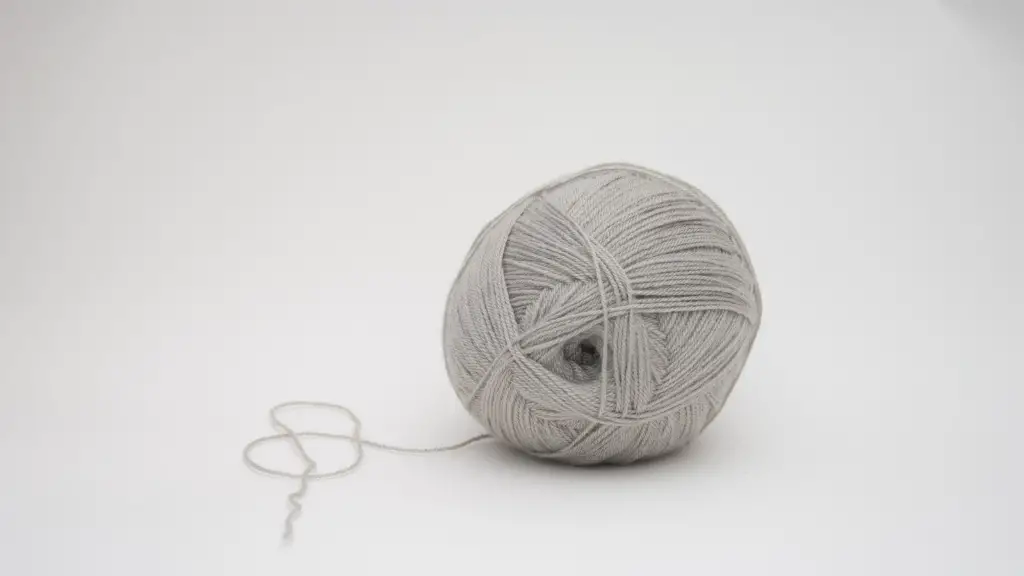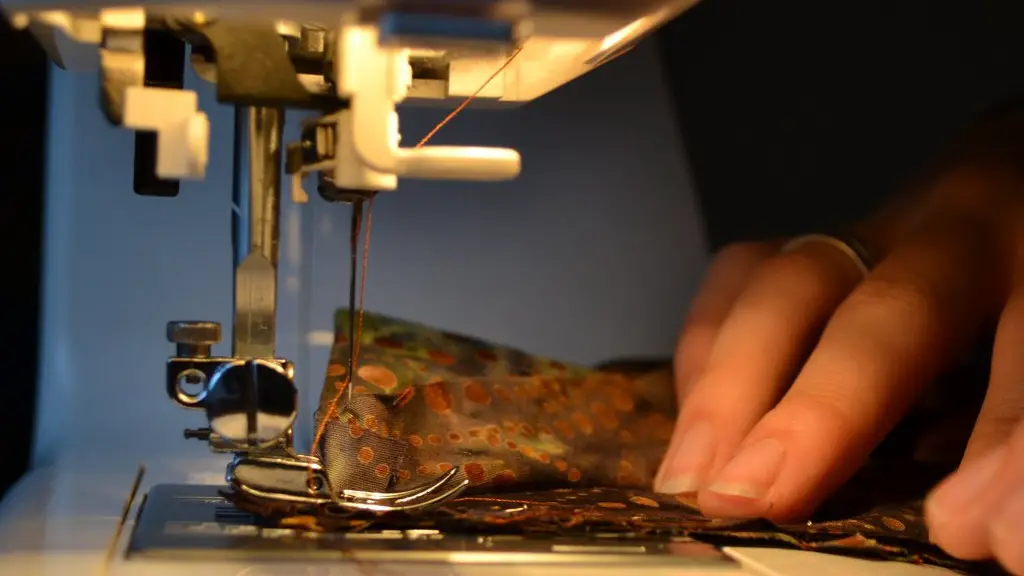Reducing Sewing Machine Vibration
Anyone who has used a sewing machine knows that it often produces a loud, high-pitched humming noise. This noise is caused by vibration, which occurs as the sewing machine actively works to produce clean, accurate stitches. The noise produced by vibration can be disruptive to your surroundings and can lead to headaches, sleeplessness, and even hearing loss over time.
Understanding the factors that contribute to sewing machine vibration is the first step in reducing it. One of the biggest causes of vibration in a sewing machine is an imbalance in the moving parts. Improper tension settings, incorrect threading, and even lack of lubrication can cause these parts to become imbalanced, creating a situation where the vibration is greater than necessary.
Getting in the habit of regularly lubricating the machine’s moving parts can go a long way towards reducing vibration. A lubricant should be chosen specifically for the type of sewing machine you have, as some lubricants can be too thick or too thin and can cause problems if not applied correctly. Apply the lubricant as per the instructions given in the machine’s manual, and it will help to reduce vibration.
Tightening the screws and bolts of the sewing machine is another good way to reduce vibration. This should be done whenever the machine is first used, and at regular intervals afterwards. Another good practice is to routinely check for worn or frayed wires and replace them if necessary. Keeping the machine clean will also help to reduce vibration, as dirt, lint, and thread build up can be sources of unnecessary friction.
If vibration is still a problem, even after trying these methods, a better quality sewing machine may be the solution. Higher quality machines tend to be better balanced, which in turn helps to reduce unnecessary vibration. Additionally, they are made with higher-end parts and materials, which can lead to a longer working life with less maintenance.
Using the Right Materials
Using appropriate materials is an effective way to help reduce sewing machine vibration. Depending on the type of material and the amount of thread being used, vibration can become much greater than is necessary. Those who are new to sewing or unfamiliar with the different types of fabrics should take the time to learn about the different types and how to use them properly.
Lighter fabrics tend to cause less vibration than heavier ones. Natural fabrics such as cotton and linen are typically a good choice for beginners. Synthetic fabrics such as acrylic, spandex, and nylon can be more difficult to work with, and as a result, may produce more vibration. It’s a good idea to practice with different fabrics so that you can become more familiar with how to use them effectively and reduce the amount of vibration produced.
Synthetic threads are much stronger than natural threads and are less likely to break, but they can produce more vibration. Whenever possible, use cotton thread with a smaller diameter to reduce vibration. The tension of the thread should be adjusted regularly; this will help to keep the thread from slipping, which can cause noise and vibration.
Using the right needle is important for reducing sewing machine vibration as well. If a needle that is too thin is used, it can cause stitches to bunch up and the fabric to pucker, which can lead to excessive vibration. If a needle that is too thick is used, it may produce too much friction and cause the thread to break, leading to even more vibration.
When selecting a needle, make sure to choose one that is appropriate for the material and thread being used. Once the needle has been chosen, make sure to thread it correctly and attach it to the machine securely. This will help to ensure that the fabric is stitched properly and that the machine produces less vibration.
Using Anti-Vibration Accessories
Another effective way to reduce vibration produced by a sewing machine is to use anti-vibration accessories. Many companies make products specifically designed to help reduce the amount of vibration produced by sewing machines. These can include anti-vibration mats, stands and tables, suspension systems, and weighted bases.
Anti-vibration mats are placed underneath the sewing machine to absorb some of the vibrations and noise. They are usually constructed from a material such as rubber, and are designed to reduce the noise and vibration produced by the sewing machine. Stands, tables, and suspension systems can also be used to help reduce the amount of vibration produced by the machine, and can help to improve the stability and accuracy of the stitches.
Weighted bases are also a great way to reduce vibration. These are devices that place a weight on the sewing machine to help keep it steady. This reduces the amount of vibration produced, and it can also make the machine more stable and easier to use. Weighted bases are great for anyone who is serious about sewing and would like to reduce vibration in their sewing machine.
Using Mechanical Devices
Using mechanical devices can be another helpful method for reducing sewing machine vibration. One of the most popular mechanical devices is called a harmonic filter, which is designed to reduce the frequency of the vibrations caused by the sewing machine. They can be quite expensive, but are worth considering if the sewing machine produces a lot of vibration.
Another device that can be used to reduce vibration is called an inertia damper. This is a type of device that works by dampening the vibration produced by the sewing machine. It works by absorbing the vibrations and then converting them into heat. The heat is then converted into motion, thus reducing the amount of vibration produced by the machine.
It is also possible to reduce vibration through the use of sound dampening materials. These materials absorb sound energy, which in turn reduces the amount of vibration produced. It is important to note that these materials should not be used on the sewing machine itself, as this can damage the machine, but rather should be used to line the walls of the room in which the machine is located.
Setting Up the Sewing Space
Setting up the sewing space in the right way can also help to reduce the amount of vibration produced by a sewing machine. Making sure that the sewing machine is on a flat and stable surface is essential. This will help to ensure that the machine moves smoothly and is less likely to vibrate excessively.
In addition, it is important to make sure that the workspace is well lit. This will help to ensure that the machine is properly aligned and that all of the moving parts are moving smoothly. Poor lighting can cause unnecessary strain on the machine, leading to increased vibration.
Finally, it is important to keep the sewing space free of clutter. Clutter can block off airflow, which can cause an accumulation of dust and lint in the machine’s parts. This can lead to unnecessary friction and vibration, so it is best to keep the workspace tidy in order to reduce the amount of vibration produced.
Making Small Adjustments
Making small adjustments to the way the machine is used can also help to reduce the amount of vibration produced. This can include reducing the speed of the machine, as a slower speed reduces the strain on the machine and can reduce vibration. Additionally, it is important to keep an eye on the tension settings and make sure that they are set correctly. Too much or too little tension can cause the machine to vibrate more than necessary.
It is also important to use the correct type of foot pedal for the machine. Many sewing machines are designed with an adjustable foot pedal, which can be adjusted to reduce the amount of vibration produced. The pedal can be adjusted by loosening or tightening the screw at the bottom of the pedal, and this will help to reduce vibration.
Finally, it is important to make sure that the thread is always securely and properly threaded in the machine. Improper threading can cause the thread to move around inside the machine, which in turn can lead to noise and vibration.
Conclusion
Reducing sewing machine vibration is an important step for anyone that wants to avoid the headaches, sleeplessness and even hearing loss associated with excessive noise from a sewing machine. Following the tips outlined in this article should help to reduce vibration and keep the sewing experience more enjoyable.





